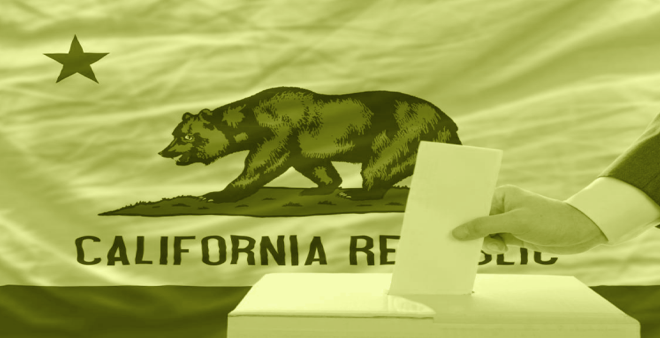CommentsHERE’S WHAT I KNOW-My column last week detailed Prop. 50 and the slew of initiatives possibly headed for the November ballot. Election officials across the state are not only prepping for the June 7 primary but are also making decisions that will impact just how many choices you’ll have to consider for the statewide ballot come the first Tuesday in November.
County elections workers are busy checking the hundreds of thousands of signatures collected during the past months to determine whether or not backers collected enough valid signatures to move forward. The propositions ask voters to weigh in on everything from gun control to the salaries of hospital employees in what would be the most jam-packed ballot since 2000. Much of this hinges on random samplings of signatures. Depending on random sampling results, Secretary of State Alex Padilla could order that every signature be checked, which would not be completed by the June 30 deadline to qualify for the November ballot and would be delayed until November 2018.
Eight measures are already headed for the November ballot, although the statewide minimum wage initiative will likely be withdrawn since Governor Brown has already signed a minimum wage law last month. Five of the ten measures checked appear to have cleared the random sampling and reports have not come in for the remaining five.
An advisory ballot measure, which asks voters for their opinion on federal campaign finance laws could be placed on the ballot by the Legislature, which would boost the number of statewide propositions to eighteen.
Pot Legalization Initiative
One the initiatives that appears to be headed for the November ballot would legalize recreational marijuana. According to the state Legislative Analyst’s Office, if passed, the measure could generate more than $1 billion annually for state and local governments. The Legislative Office Analyst’s office speculates the passage of the measure would lead to an increase in marijuana usage and thus, require additional funds spent on drug treatment.
State lawmakers recently held a hearing on the measure, which is supported by former Facebook president Sean Parker and others. If passed, the possession, transport, and use of up to an ounce of marijuana would be decriminalized for adults over 21 if used for recreational purposes. The measure would levy a 15% tax on retail sales. According to supporters, some of the funds generated would go to increased law enforcement and drug treatment programs. Supporters also argue that the measure would reduce the cost of keeping offenders in jail or prison.
Opponents of the bill argue that the decriminalization might increase home invasion robberies and Assemblyman Sebastian Ridley-Thomas (D-Los Angeles) expressed concern that the proposal is an initiative instead of legislation that could be refined by legislators. The California Association of Highway Patrolman and other law enforcement groups argue that the measure could lead to an increase in DUIs and drug-related accidents related to marijuana use, which they say would not lead to a savings for law enforcement.
Legalization of recreational marijuana may not be the tax revenue panacea it appears to be. According to Business Insider, since Colorado and Washington State first legalized pot, both states saw an upswing in medical marijuana licenses, probably as a result of the increased sales taxes on recreational marijuana. The legalization hasn’t necessarily impacted the black market for the same reason. While the increase in marijuana usage may not necessarily lead to increased need for drug treatment, the increase in driving under the influence of THC (the active ingredient in pot) has increased in both states. It’s important to take a balanced look at the potential pluses and minuses.
Affordable Housing
The lack of affordable housing is a pressing issue in Los Angeles County and members of the Assembly and Senate continue to urge Gov. Brown to dedicate funds toward affordable housing programs. At a budget hearing last Tuesday, Assembly Democrats asked for $650 M allocated to rental housing subsidies for low-income workers, as well as tax credits and housing for farm laborers, half of what some in the Assembly had already requested. Senators are also requesting $200 M in funding to combat homelessness. The governor has not included either request in his revised budget, stating that housing subsidies aren’t cost efficient.
Governor Brown is supporting a $2 billion bond promoted by Senate leaders that would reallocate existing funds toward services for the homeless. The governor’s housing affordability plan centers on loosening developer restrictions, a move that is unpopular with both labor and environmental groups.
The governor’s plan, supported by economists and academics, rests on the premise that the crisis reflects lack of housing to meet needs. His plan would streamline the development process but is dependent on how his plan could override local government restrictions. Exempted from detailed local government reviews are urban projects that would reserve at least 20 percent of their units for low-income residents; if the projects are near public transit, that percentage is reduced to 10 percent. The caveat is the property must already be zoned by local government for high-density residential projects.
The Governor’s plan might be an effective strategy for adding to the housing supply, which may, in turn, decrease costs but does not take into consideration parking and traffic considerations that would impact quality of life in existing neighborhoods. Developers and those who own these buildings must be held accountable to make sure units are affordable and there needs to be a substantial net gain in the number of affordable units to counter the increased traffic and parking issues.
(Beth Cone Kramer is a successful Los Angeles writer and a columnist for CityWatch.) Prepped for CityWatch by Linda Abrams.
Sidebar
Our mission is to promote and facilitate civic engagement and neighborhood empowerment, and to hold area government and its politicians accountable.

 CityWatch Los Angeles
Politics. Perspective. Participation.
CityWatch Los Angeles
Politics. Perspective. Participation.
11
Thu, Dec














